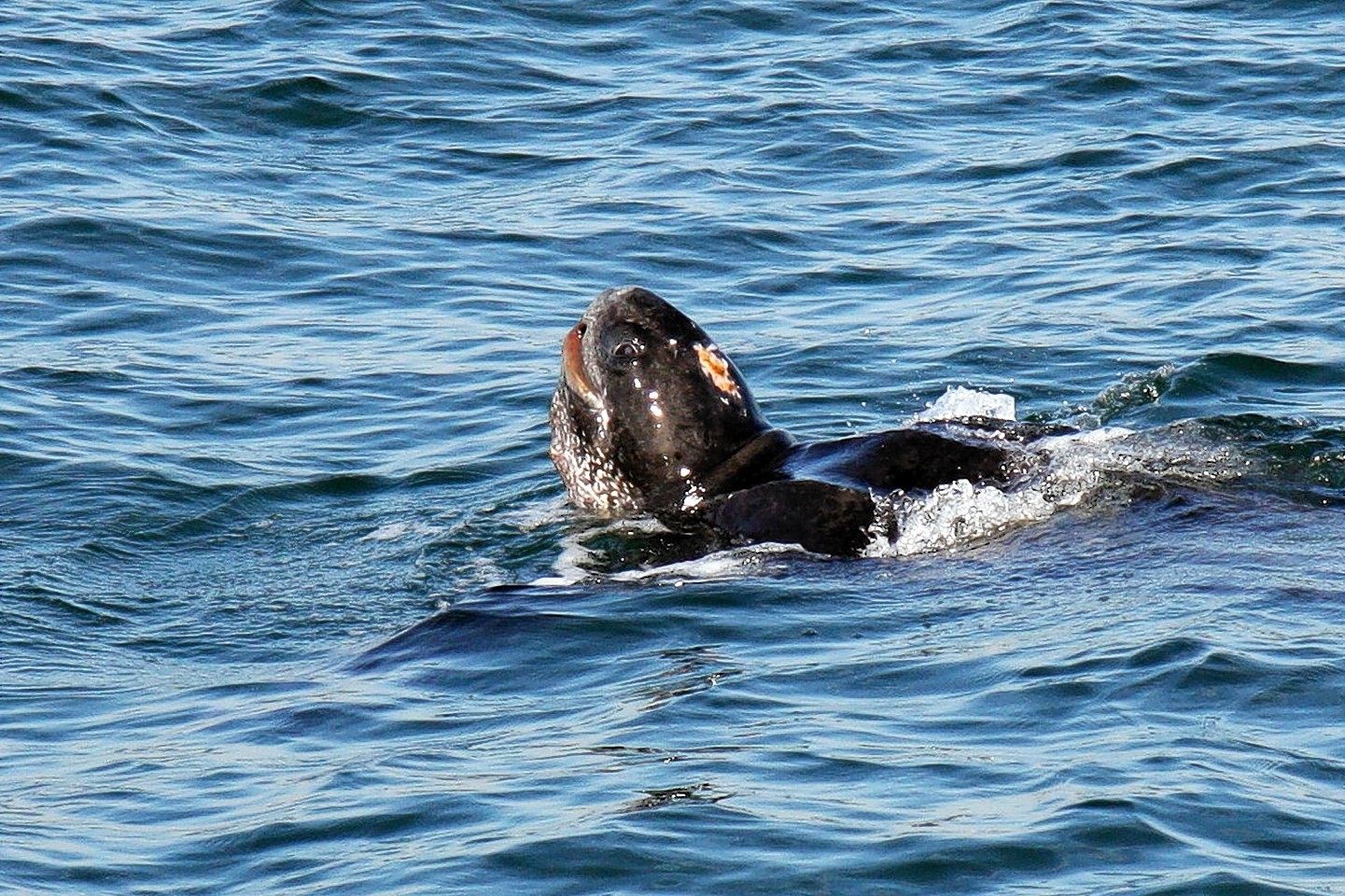As Scotland swelters in tropical temperatures a giant turtle has made a 4500 mile journey from the Caribbean.
It was seen on Tuesday in the Firth of Lorne off Argyll by Ruth and Chris Odling and reported to the Hebridean Whale and Dolphin Trust – the first sighting of the species to the trust this year.
Only a handful of turtles are seen each year in Scottish waters, and rarely alive.
Plastic bag and balloon ingestion have also been found as the cause of death in a number of cases. Turtles swallow plastics after mistaking them for jellyfish, their main prey.
Tuesday’s turtle was likely to be a leatherback – the most commonly seen in Scottish waters. It is the largest turtle in the world and is a rare visitor to the Hebrides in summer. Its diet consists mainly of jellyfish and the team had spotted a number of lions mane and moon jellyfish in the area.
Leatherback turtles can grow to more than 110stones and more than 6.5ft in length. They have a large distribution and are considered to be large ocean travellers with huge migrations from areas of breeding to other locations of good food source.
In 2014 three giant leatherback turtles were mysteriously washed up dead on west coast Scottish beaches within days of each other after travelling thousands of miles from the Caribbean.
A leading marine scientist described the strandings as “unprecedented.” They were the first turtle strandings recorded in Scotland for five years.
One of the leatherbacks weighed a massive 58st 11lbs and is estimated to be aged between 40 and 80-years-old.
It was found by a local fisherman in Eddrachillis Bay near Drumbeg, Sutherland.
Four species of turtle – Kemp’s ridley, leatherback, loggerhead and green – have all been recorded in Scottish waters.
